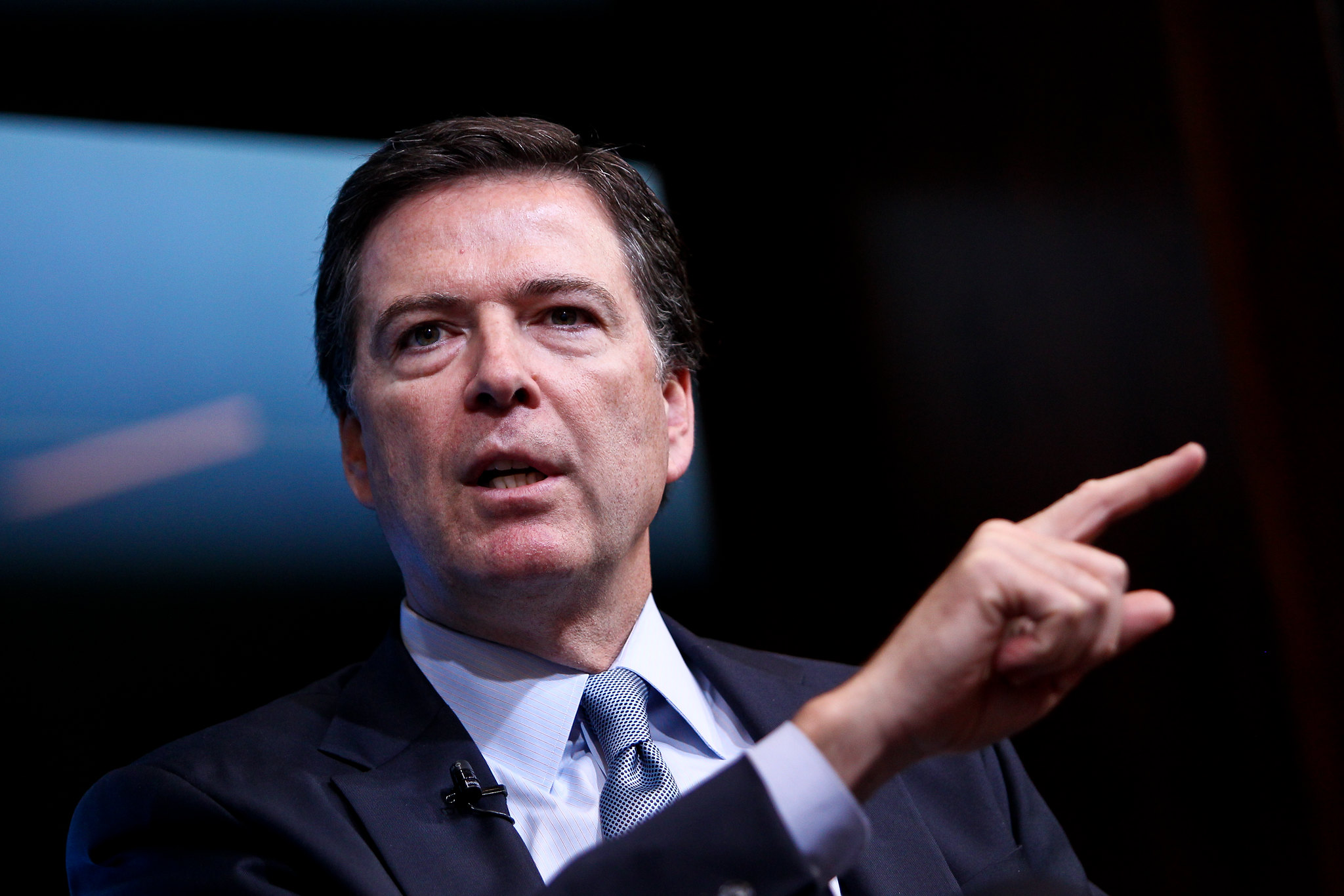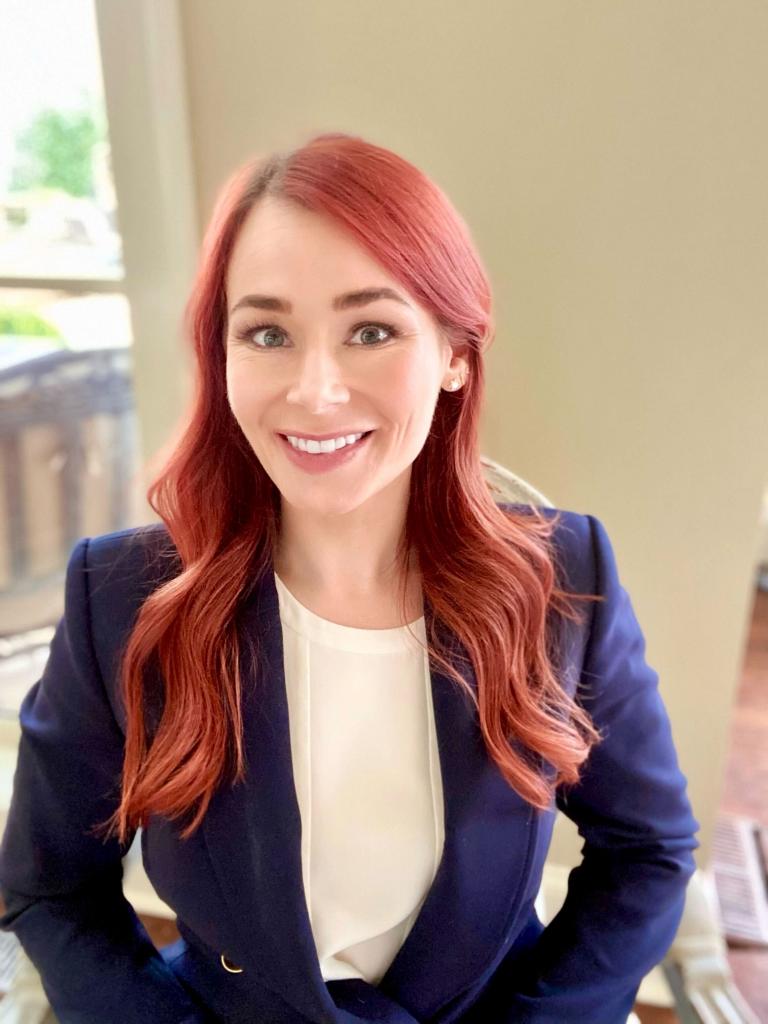More Trouble for the Comey Indictment?

Published by The Lawfare Institute
in Cooperation With

When a Virginia grand jury returned a two-count indictment against former FBI Director James Comey in September, one of the most striking features of the document was not what it said, but rather what it left unsaid.
The indictment charged Comey with obstructing justice and lying to Congress during his 2020 testimony before the Senate Judiciary Committee. Prosecutors specifically allege that Comey falsely denied ever authorizing someone “at the FBI” to serve as an anonymous source in news reports concerning the Bureau’s investigation of Hillary Clinton. According to the indictment, Comey had “in fact had authorized PERSON 3” to serve in that role. But the otherwise threadbare charging document offered few clues about the underlying facts—leaving many, including Comey’s own defense counsel, mystified as to the factual basis for the charges.
The case came into sharper focus earlier this week. On Monday, federal prosecutors filed a 48-page brief opposing Comey’s motion to dismiss on the grounds of selective or vindictive prosecution. Comey’s motion contends that the charges were brought out of personal animus that President Donald J. Trump harbors against Comey, whom he had fired during his first term. In response, the government defended the Justice Department’s motives and laid out, for the first time, the factual foundation of its case.
At the center of that narrative is the indictment’s “PERSON 3”, whom the government has identified as Daniel Richman. Richman—a Columbia University law professor, former federal prosecutor, and longtime confidant of Comey—performed intermittent consulting work for the FBI beginning in 2015. According to prosecutors, Richman is the person “at the FBI” whom Comey allegedly “authorized” to anonymously leak information to the press about the Clinton investigation. In an apparent effort to support this allegation, the filing details a series of communications between Richman and Comey, or between Richman and third parties, spanning from a period between October 2016 to May 2017.
On Tuesday, Benjamin Wittes and I published a lengthy analysis of the government’s brief in Lawfare, surmising that the case against Comey is “unspeakably, breathtakingly devoid of merit.” Nothing in the brief, we concluded, comes close to proving that the former FBI director lied to Congress.
But when you look beyond the litigation documents themselves, it turns out the government’s case may be even weaker than it seemed. Its flaws are compounded by an additional problem that warrants closer scrutiny: the timeline of Richman’s employment.
At the core of the prosecution’s argument is the claim that Comey authorized someone “at the FBI” to speak to reporters anonymously. The government asserts that Richman is that someone, and that he was at the FBI because he held the status of a special government employee “since 2015.” What the brief omits, however, is whether that status was continuous—or when it ended.
Those omissions turn out to be critically important details. In recent weeks, several of us at Lawfare have reviewed a tranche of publicly available agency records pertaining to Richman’s appointment and scope of employment at the FBI. The documents suggest that Richman—the alleged anonymous source “at the FBI”—may not have been officially employed by the Bureau during any of the communications cited in the government’s brief.
The documents in question came to light as a result of litigation brought against the FBI on behalf of a right-wing website, the Daily Caller. Under the Freedom of Information Act (FOIA), the Daily Caller sought “all records, documents, and communications pertaining to Daniel Richman, a Special Government Employee hired by former FBI Director James Comey.” In turn, the FBI agreed to provide various categories of documents related to Richman’s work for the Bureau, including “records located in an Office of General Counsel file discussing Richman’s position and job duties.” The case came to an end in 2021, when the parties stipulated to a voluntary dismissal of the suit. Records produced by the FBI related to Richman’s employment are now available on the FBI’s website, which publishes materials produced under the Freedom of Information Act.
To be sure, Freedom of Information Act productions may not reflect the full universe of relevant documents, as exemptions and omissions are common. The materials that are available, however, appear to establish a clear chronology related to Richman’s employment status at the Bureau. That timeline, in turn, may further complicate the government’s already convoluted case against Comey.
So, what do the materials show?
According to the records, Richman’s first appointment as a special government employee began on June 30, 2015. He was brought on to advise senior FBI leadership on the “Going Dark” issue—a reference to the challenges posed to U.S. law enforcement capabilities by evolving technologies, such as end-to-end encryption. The subject matter of his consulting for the Bureau later expanded to include other issues, including an “examination of the implications of federal investigations being brought to state and local prosecutors.” Richman’s original appointment letter specified that he would perform this work “without compensation” on a “part-time and/or intermittent basis” for a one-year term, with the possibility of reappointment at the Bureau’s discretion. Documentation expanding the scope of his role confirmed that those terms remained in place.
This is where things begin to get awkward for the prosecution. On June 30, 2016—one year after his initial appointment—Richman’s term as a special government employee expired. That day, an employee at the FBI’s Human Resources Division emailed a colleague at the Office of General Counsel, which had sponsored Richman’s initial appointment. “Just a friendly reminder that Mr. Richman’s 1st term has expired today,” the person wrote. “Please send in the EC request for reappointment.”
For reasons that remain unclear, however, Richman was not immediately reappointed. Over the next several months, employees at the Human Resources Division repeatedly followed up on the matter. On Oct. 27, 2016, one wrote: “Just a friendly reminder that please provide the file and serial numbers to reappoint 2nd term for Mr. Richman. His 1st term has expired on 6/30/2016.” In reply, a program analyst with the Office of General Counsel explained that the Richman matter remained pending because “the Director’s Chief of Staff and GC Baker are still discussing the details of his reappointment.”
By mid-November, records show that the Office of General Counsel had submitted a request for Richman’s reappointment, noting that he would continue to consult on the “Going Dark” problem and acknowledging that his first term as a special government employee had expired. The next month, on Dec. 14, 2016, the Human Resources Division approved the reappointment request. It sent the relevant paperwork to the Office of General Counsel with explicit instructions: “ensure that [Richman] signs the acknowledgement form.”
Apparently, he never did. Documents produced in relation to the Daily Caller suit indicate that Richman neglected to sign his reappointment papers. One FBI official emphasized this point in a hand-written note included among the FOIA materials: “Doc drawn up + sent to OGC for Richman signature. Never signed. Never officially reappointed after June 2016.” Which raises an important question: Was he ever “officially” reappointed after his first term expired on June 30, 2016? And if not, was he really “at the FBI” at the time of the alleged communications on which the government’s case depends?
In any event, Richman’s second term as a special government employee—if it ever officially took effect—was short-lived. According to internal FBI emails, he resigned from the Bureau on Feb. 7, 2017.
With these facts in view, it becomes clear why the government might have preferred to obscure the precise dates of Richman’s formal affiliation with the FBI: Every single one of the communications cited in the government’s brief took place either after Richman’s initial term had lapsed and before any valid reappointment occurred, or after he had resigned.
A closer look at the actual dates makes the problem for the prosecution plain. In its response to Comey’s motion to dismiss, the government cites the following series of interactions between Richman and Comey, as well as Richman and others:
- An email chain between Comey and Richman spanning from Oct. 29. to Nov. 2, 2016.
- Feb. 11, 2017 emails between Richman and Chuck Rosenberg, then the head of the Drug Enforcement Administration.
- An April 23, 2017 email exchange between Comey and Richman.
- A May 11 to May 17, 2017 text thread between Richman and Michael Schmidt, a reporter for the New York Times.
The document presents these communications in an apparent effort to support the idea that Comey authorized someone at the FBI—namely, Richman—to serve as an anonymous source in news reports about the Clinton investigation. But three of the four interactions occurred after Richman unequivocally resigned from the FBI, on Feb. 7, 2017. The remaining communications took place in the fall of 2016, well after Richman’s initial appointment as a special government employee had expired and before his reappointment was approved on Dec. 14, 2016.
In other words, during none of the relevant communications was Richman an employee “at the FBI” in the technical sense—a fact that should make any prosecutor think twice about pursuing this charge, even before one gets to the separate question of whether any of the communications show that Comey authorized Richman to serve as an anonymous source about the Clinton investigation.
It’s possible that the prosecution is willing to gamble that 12 reasonable jurors would turn a blind eye to the formal status of Richman’s employment. After all, the question posed to Comey during his Congressional testimony asked whether he had authorized someone “at the FBI” to anonymously engage with the press—not whether he authorized an “employee” of the FBI to do so.
To that end, there is evidence among the FOIA documents suggesting that Richman did indeed carry out some intermittent work with the FBI during the months-long period between the expiration of his initial appointment in June 2016 and his formal reappointment in December 2016. That fall, for example, he organized a closed-door discussion between FBI officials and Columbia academics regarding the “Going Dark” problem. He also maintained access to his FBI email account, and internal records suggest that some FBI officials may have considered him to be affiliated with the Bureau even after his first appointment lapsed.
But some of the evidence could cut the other way. By January 2017, Richman’s GSA access card—a card used for building access by federal employees and contractors—had expired, according to emails he sent during that time. Additionally, Richman apparently never took a required ethics training for special government employees in 2016.
And it’s difficult to argue that Richman’s formal employment status is entirely irrelevant to whether he was “at the FBI”—particularly given that the ambiguity of that phrase is already a contested issue in the case. In one of Comey’s pre-trial motions to dismiss, the defense argues that the questions posed to Comey during his testimony were fatally vague. There was no reason, the defense contends, to interpret “at the FBI” as referring to anyone other than full-time employees, rather than part-time or intermittent consultants like Richman. The uncertainty over Richman’s formal employment status further reinforces the view that his affiliation with the FBI was attenuated—he was arguably never “at the FBI” in the sense a reasonable person would understand the phrase.
This all may seem like a preposterous exercise in splitting hairs. But getting the technicalities wrong can be meaningful, particularly when they’re part of allegations in a criminal indictment, which the government must prove beyond a reasonable doubt. If Richman was not, in fact, “at the FBI,” the government’s case against Comey will likely collapse. That’s because, in support of the false statements charge in Count One, the barebones indictment offers nothing more than that the allegation that Comey lied when he testified that he’d never “authorized someone else at the FBI to be an anonymous source in news reports.” But for Comey’s statement to be false, the person he allegedly authorized—Richman—must have been “at the FBI.”
All of which raises the question of whether the prosecution has fully reckoned with the factual and legal ambiguities in its own case. At Comey’s arraignment in October, Assistant United States Attorney Nathaniel Lemmons told the presiding judge that the prosecution team was “just getting our hands around” the evidence in the case. Nearly a month later, during a Nov. 5 hearing, it appeared that little progress had been made—prompting the magistrate judge, William Fitzpatrick, to chastise the government for its “indict first, investigate second” approach. Such a method, Fitzpatrick warned, “creates procedural challenges and substantive challenges.”
Challenges, indeed.
Editor’s note: James Comey and Daniel Richman are occasional contributors to Lawfare. For this article, Richman declined to comment, and the Justice Department did not respond to a request for comment.



.jpg?sfvrsn=8253205e_5)


